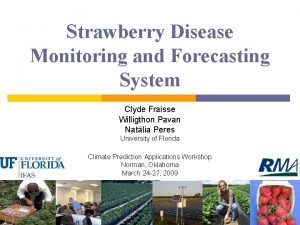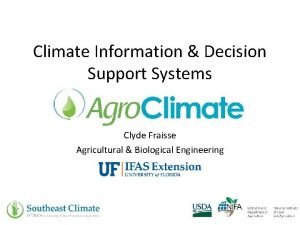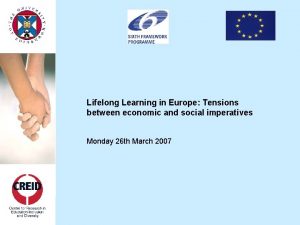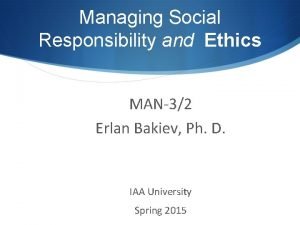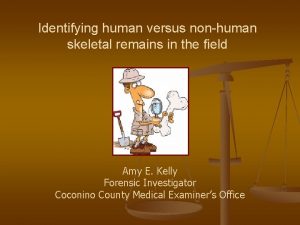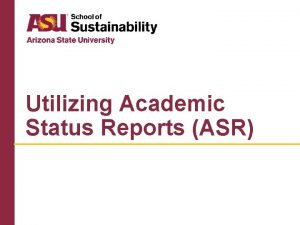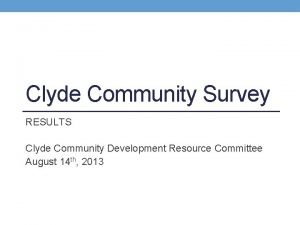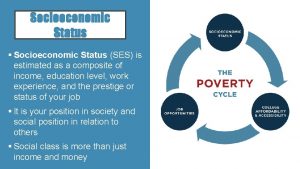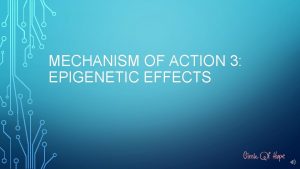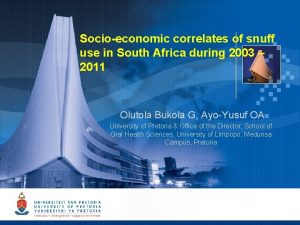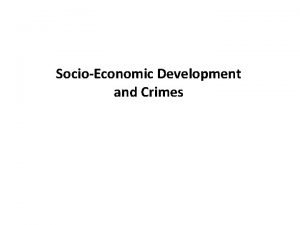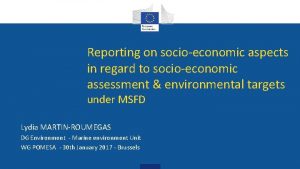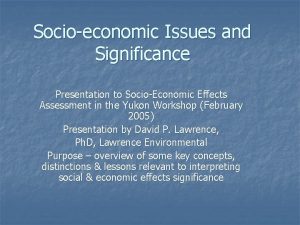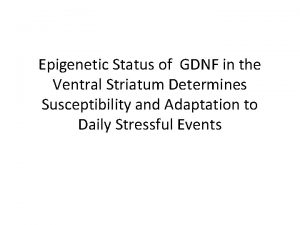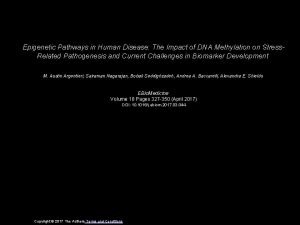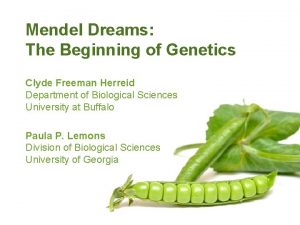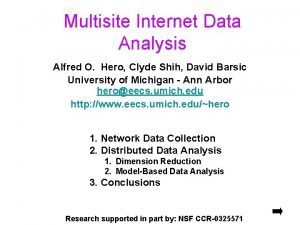Epigenetic correlates of human socioeconomic status Clyde Hertzman

























- Slides: 25

Epigenetic correlates of human socioeconomic status Clyde Hertzman

Gradient in all Cause Mortality: UK Whitehall Study (1980 s)

CHD Mortality - UK Whitehall Study

The Challenge of the Gradient • ubiquitous in wealthy and majority world countries by income, education, or occupation • cuts across a wide range of disease processes • not explained by traditional risk factors • replicates itself on new conditions as they emerge • occurs among males and females • ‘flattens up’ • begins life as gradient in ‘developmental health’

Sensitive Periods in Early Brain Development Pre-school years High School years Numbers Peer social skills Language Symbol Habitual ways of responding Emotional control Vision Hearing Low 0 1 2 3 4 Years 5 6 7 Graph developed by Council for Early Child Development (ref: Nash, 1997; Early Years Study, 1999; Shonkoff, 2000. )

% Vulnerable Canada: % vulnerable by SES Source: NLSCY/UEY 1999 -2000; EDI 1999 -2000

% Vulnerable Jamaica: % vulnerable by SES

% Vulnerable Kosovo: % vulnerable by SES

Life Course Impacts of Early Experiences 2 nd Decade • School Failure 3 rd/4 th Decade • Obesity 5 th/6 th Decade Old Age • Coronary Heart • Premature Disease Aging • Teen Pregnancy • Elevated Blood Pressure • Diabetes • Criminality • Depression • Memory Loss

Hypothesis: Biological embedding occurs when • experience gets under the skin and alters human biodevelopment; • systematic differences in experience in different social environments lead to different biodevelopmental states; • the differences are stable and long-term; they influence health, well-being, learning, and/or behaviour over the life course.

Archeology of Biological Embedding Experience/Behavior Neural Circuitry Cell/Synapse Gene Expression

Shallow Archeology Candidate Systems • HPA axis --- cortisol • ANS system --- epinephrine/ne • Prefrontal cortex • Social affiliation --amygdala/locus cereleus • Immune function -- the ‘peripheral brain’

Candidate System: Prefrontal Cortex SES Differences by School Age

Deep Archeology ‘Social Epigenesis’ and other processes that can influence gene expression.

Biological Embedding: The ‘Meaney. Szyf Paradigm’ • rat pups from high and low licking/suckling mothers cross-fostered to remove genetic effect • differential qualities of nurturance occurs during sensitive period of brain development • differential nurturance leads to epigenetic modification of key DNA regulatory loci through methylation

The ‘Meaney-Szyf Paradigm’ (cont’d) • epigenetic modification leads to lifelong change in HPA axis response to stress • this change affects learning and behaviour across the rat life course • inter-generational transmission (high licked female pups become high licking mothers, and vice versa)

The Opportunity If early experience really does ‘get under the skin’ to influence brain and biological development through epigenetic processes, then: • similar environments & experiences should leave a consistent set of epigenetic ‘marks’ on different populations, and/or create great opportunities for understanding gene-environment-epigenetic interplay. • the variation in epigenetic marks in children from diverse environments (& experiences) globally should teach us a great deal about biological embedding.

SES, Life Course and Epigenesis: An Hypothesis Generating Study • The opportunity: 1958 British Birth Cohort (>17, 000 members at birth), with >4000 phenotypic variables collected at birth and 7 follow-ups, with fresh lymphocytes collected at age 45. • The goal: to identify a full range of gene loci where experience may have become ‘biologically embedded’ through methylation. • Done to date: examined >20, 000 regulatory regions of 40 cohort members, sampled according to a factorial design, based upon extremes of SES in childhood and adulthood (also, abuse and maternal smoking)

The Team • Population health/life course epidemiology: Clyde Hertzman, Chris Power • Epigenetics: Moshe Szyf, Marcus Pembry • Bio-informatics: Michael Hallett, Matt Suderman • Laboratory: Nada Borghol

So far: • 1252 loci differentially methylated according to childhood SES (smaller signatures for adult SES and social mobility) • 794 loci differentially methylated by maternal smoking • Approx. 4000 loci differentially methylated by retrospective reports of abuse in childhood

1958 Cohort • • Replication Expression? ? Gene analysis Exploit 4000 phenotypes with larger sample sizes

Consistency in different populations? The Wisconsin Study of Families and Work The BC GECKO Study: ‘On and Off-diagonal children’ in ‘On and Off-diagonal neighbourhoods’ Developing country studies

Is this the way forward? Exposure Endophenotype Phenotype Mid- Brain Abuse Epigenome affiliation/attachment PFC executive function/ impulsivity Health behaviors Mental health HPA stress response Chronic diseases

Exposure (Prenatal) Maternal Smoking Childhood Abuse Childhood SES Epigenome Biochemical Phenotype /Biophysical Pathway Exposure Specific Pathways Common Pathways Exposure Specific Pathways Outcome(s)

www. earlylearning. ubc. ca
 A refrigerator is a symbol of sociology
A refrigerator is a symbol of sociology Aaron hertzman
Aaron hertzman Epigenetic
Epigenetic Epigenetic modulation
Epigenetic modulation Correlates of effective schools
Correlates of effective schools Clyde de jesus
Clyde de jesus Clyde fraisse
Clyde fraisse Clyde tolson
Clyde tolson Clyde space limited
Clyde space limited Clyde fraisse
Clyde fraisse Socioeconomic model
Socioeconomic model Socioeconomic examples
Socioeconomic examples Managing ethics and social responsibility
Managing ethics and social responsibility Human vs non human bones
Human vs non human bones Human needs and human development
Human needs and human development Chapter 8 human needs and human development
Chapter 8 human needs and human development Human development index definition ap human geography
Human development index definition ap human geography Human and non human nouns
Human and non human nouns Difference between status report and progress report
Difference between status report and progress report Master status
Master status Dts gate motor wiring diagram
Dts gate motor wiring diagram Dts gate motor pc board price
Dts gate motor pc board price You record the age marital status
You record the age marital status Academic status report
Academic status report Sebutkan fungsi dari title
Sebutkan fungsi dari title षठ
षठ






